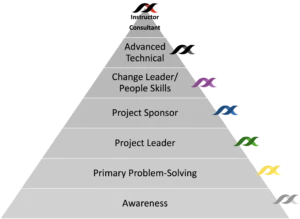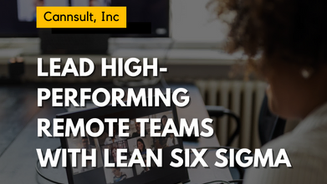The key to successfully leading cross-functional projects and teams of people spread across the globel
Many of the most well-intentioned organizations were already facing actively or passively disengaged employees before the pandemic. How might an increase in remote working impact their engagement and performance?
Previously high-performing individuals and teams may experience declines in performance and engagement when they work remotely, especially in the absence of preparation and training that would typically take place before a major change. (We didn’t’ actually have much time to prepare for a whole new way of working).
Here are a few of the top factors that can make remote teamwork especially challenging
Time management and prioritization
The work can feel like it’s never ending. It can be very easy to get swamped by the minutia while the critical tasks are going undone. To add to the stress, the lines can be horribly blurred between home and work life.
Unclear performance metrics
With less frequent interactions, employees can easily lose touch with what a good job looks like in the eyes of their manager or customer. And the disconnection between teams or departments can make it nearly impossible for employees to have a clear line of sight to understand how their role fits into the bigger picture.
Reduced direction and support
Being removed from the office, there are fewer conversations with those who have critical information. When they need assistance or guidance, answers may be hard to come by. Employees make independent decisions which may be misaligned with the organizational strategy and it can take much longer to complete tasks than it should.
Team communication is fragmented
Video meetings are likely frequent, but quality communication might be scarce, and many employees will feel like they are not getting the full picture. If objectives, roles and procedures are unclear, employees can feel drained rather than energized by these meetings.
Lackluster collaboration
When meetings are flat, repetitive and uninspiring, they are non-conducive to engaging employees in productive problem-solving. The same issues continually show up. And if problems are solved, the benefits seem to gradually diminish and the success is typically not sustained.
It’s not about increasing the frequency of meetings – that would be pointless and quite unpopular.
It’s about making changes that will increase the quality and efficiency of our work. And this is done by learning and incorporating powerful rituals. Rituals are actions and behaviors that are regularly followed by a group, which ultimately shape the culture of an organization. By “powerful rituals”, we are not talking about pizza parties or Star of the Month programs. We’re referring to real problem-solving tools and methods.
Lean Six Sigma is one of the greatest sources of powerful rituals.
Different levels and roles in an organization will incorporate different tools and rituals.
In Lean Six Sigma, there are different belt levels (the idea taken from martial arts) to distinguish the different roles and levels of problem-solving and continuous improvement skills. And these roles are chock full of powerful rituals.
Powerful rituals have powerful consequences. Here are just a few examples:
-
Strong connections between individuals, teams, employees, and leaders
-
Continuity of performance even through major changes and challenges
-
Highly engaged, high performing individuals and teams
-
Rapid learning curve – speed to competence
-
Continual capability building and problem-solving skills
For example, A Lean Six Sigma Yellow Belt identifies and solves problems at the source; they specialize in daily problem-solving. Yellow Belts also participate as team members on larger, root cause analysis projects that are led by Green Belts. Their main tools and rituals are:
-
Escalation of larger or complex issues
The Lean Six Sigma Sponsor (Blue Belt) is a critical factor to the success of any improvement effort and they also have a set of rituals and structured tools of their own to ensure effective and efficient methods to:
-
Support Lean Six Sigma Yellow Belts
-
Manage the Project Portfolio
-
Support Lean Six Sigma Green Belts
A Lean Six Sigma Green Belt is skilled in the greatest number of tools as they are the workhorses of root cause analysis and complex problem-solving. Their training includes over 50 specific tools or rituals including these heavy hitters:
-
Process Analysis
-
Data Analysis
-
Proven Solutions
-
Brainstorming
-
Visual Performance Management
-
Service Level Agreements
-
Leader Standard Work
Developing employees who continually increase their problem-solving skills and their ability to successfully collaborate is always important. And with the rapid changes and shifting more and more away from the physical team to remote teams, the tools and skills of Lean Six Sigma have never been more relevant – they’ve never been more important.
So, where do you start? Today’s problems are pressing and need to be solved now. Maybe you’ve tried something like Lean Six Sigma before with little success. Or maybe you can’t imagine carving out time for training with people already struggling to keep up with the constant changes and challenges. The answer is start where you are. Keep the things that are working and continue to upgrade the actions and behaviors that are not serving your overall purpose.
Equipping employees and leaders with the skills to successfully make rapid and meaningful improvements is always a good idea. But not every person in the organization needs to have a high-level of technical skills. Generally speaking, relatively few personnel need to be devoted to Lean Six Sigma full time.
After the organization has been applying their skills (with Lean Six Sigma teams in place for 2 years or so), employees and leaders highly skilled in problem-solving populate a sufficient number of key positions in the organization to change the organization’s DNA. In other words, exhilarating collaboration and real problem-solving starts to dominate.
Just as a general guideline, the number of “belts” for a company with 100 employees, everyone should have an understanding or basic awareness of Lean Six Sigma (that’s the White Belt). There should be about 25 Yellow Belts, 5 Green Belts and at least 1 Sponsor (that’s the Blue Belt).

If you consider the value of these different belts, there are a few benchmarks across Lean Six Sigma organizations. Of course, number of projects and average savings varies from organization to organization, but typically a Lean Six Sigma Black Belt will complete 5 to 7 projects per year if they are working full time on projects. Benefits of a Black Belt project average about US$150,000 to $250,000. A Green Belt (typically not a full time project position) might complete about 2 projects a year with an average benefit of $75,000. Do the math for your organization to see what Lean Six Sigma could do for you!
Cannsult globally accredited Lean Six Sigma certifications are 100% online and easily accessible on all of your devices.
It’s never the wrong time to give your team the opportunity to level up!








